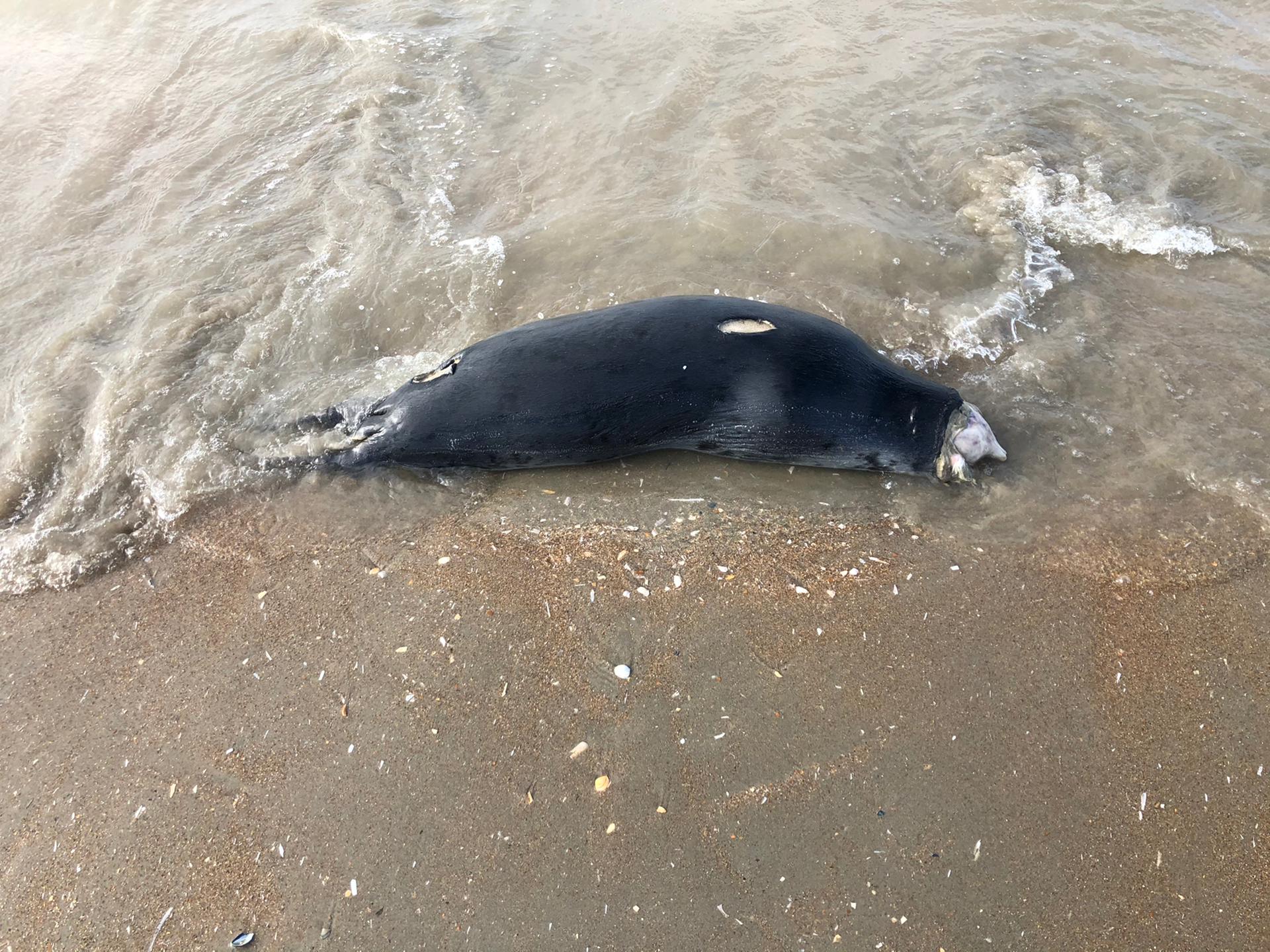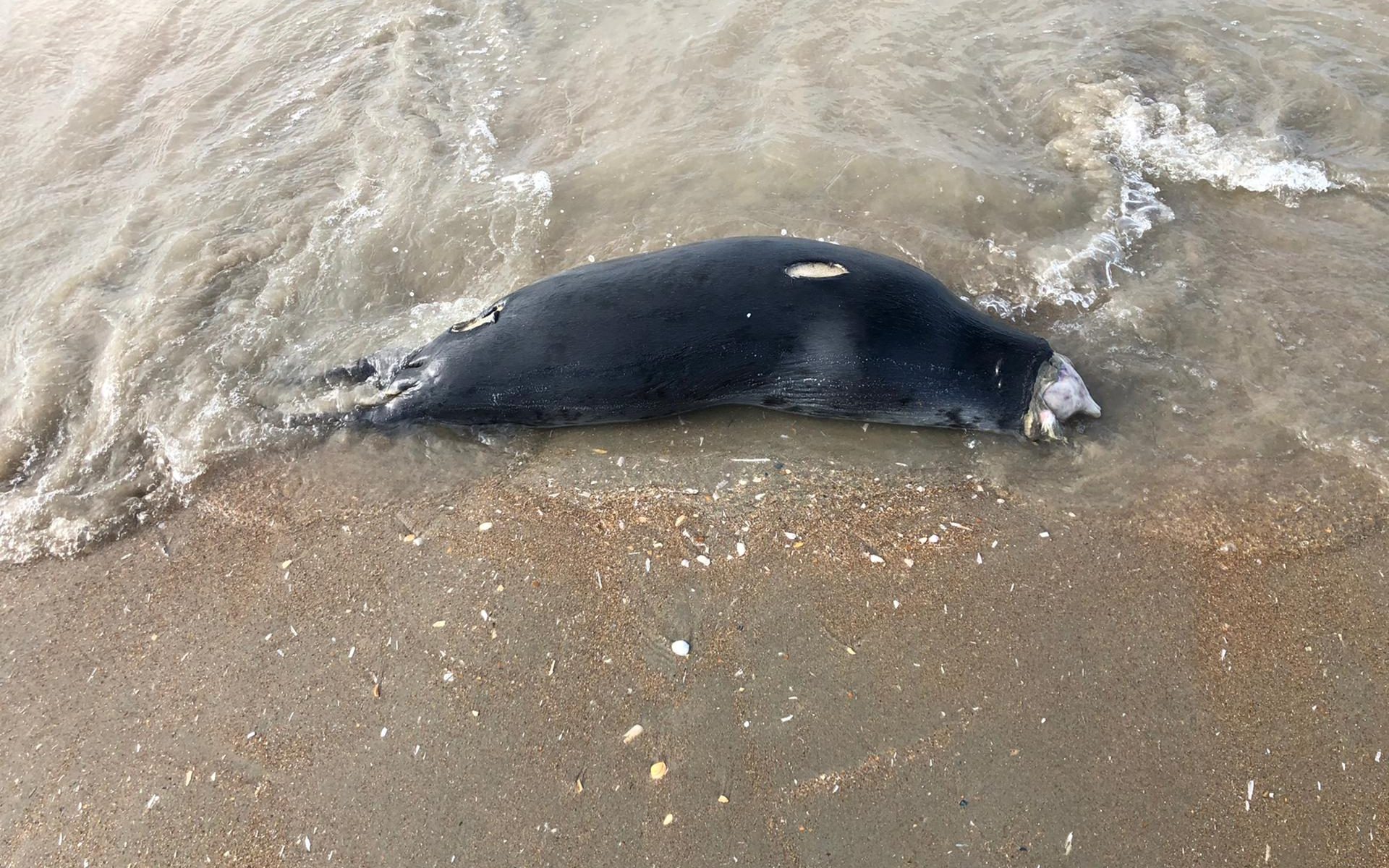So far in 2021, 22 dead seals have washed ashore along the Belgian coast. Half of them, mostly young grey seals, showed characteristic neck and head injuries. There was talk of decapitations and this caused quite a stir. A forensic analysis by the Royal Belgian Institute of Natural Sciences and the Faculty of Veterinary Medicine of the University of Liège concludes that these seals were unintentional by-catch from professional fishing with trammel or gill nets. The sudden large number of dead animals can be explained by the high number of young grey seals currently present on our coast, following the large population growth in the south-east of England.
Seals, both harbour seals and grey seals, are no longer endangered species in the southern part of the North Sea: populations are growing and, in the case of grey seals, they are larger than at any time in the history of the North Sea. This also means that seals are increasingly present in our waters and on our beaches.
From December 2020 until spring 2021, there was an invasion of very young grey seals: young animals were spotted daily on our coast. Undoubtedly, the vast majority of these animals came from colonies in the south-east of the United Kingdom, where record numbers of grey seals were born in November and December 2020. For example, the largest colony, that at Blakeney Point (Norfolk, England), gave birth to around 4,000 grey seals in the winter of 2020-2021, compared to 3,399 in 2019-2020 and just 25 in 2001.
Dead Seals in 2021
Together with the high number of grey seal sightings, a striking number of seals have washed ashore dead in recent weeks, sometimes several a day: 22 this year. Half of these animals, most of them very young grey seals born last winter, showed a characteristic injury on the neck and head. Most of them washed ashore between Ostend and De Panne. In collaboration with a veterinarian and a forensic pathologist, some of the animals showing typical injuries were examined.

The injuries on the young grey seals are almost identical. The following observations and conclusions were made:
- The head is usually not gone, but badly damaged; the skull is often still there, with fractures and exposed bone: the overlying skin and tissue are gone;
- The skin is torn off from the head in a circular manner from the neck down (scalping);
- The injuries are post-mortem (no bruising in the exposed fatty tissue);
- The injury is more of a laceration, in layers; no hairs have been cut, which rules out incision by a sharp knife;
- The injuries were caused by mechanical action: not by knives but by a rotating device.
Probable Cause of Injuries
Scavengers have the easiest access to a dead seal through the head. Gulls will quickly peck out the eyes and from there remove fat and meat via the head. Especially decomposing animals often first cause major damage to the head. The injuries to the dead seals in the spring of 2021, however, clearly have an identical background, which is not to be sought in scavenging but in a human factor.
The conclusions of the study are as follows:
- The seals have been caught incidentally in professional fishing with warren nets or gill nets, they get stuck in the net on the bottom and drown.
- The animals are trapped with their heads in the net; the net retrieval system (system with a large pulley/”drum”), together with the fine nylon thread, causes a circular incision, not typical of a knife cut, and leads to the turning of the seals’ heads through the system with crushing of the lower and upper jaw and scalping of the skull.
- After the catch, the fishermen throw the animals overboard.
The following additional remarks are important:
- The number of seals washed ashore is only a fraction of the total number of seals caught incidentally.
- Animals that are very fresh when washed up have been caught incidentally close to shore. Animals in a state of decomposition may have been caught incidentally both close to and further from shore.
- It is highly unlikely that fishermen deliberately kill seals.
- A probable explanation for the sudden large number of dead animals is the high number of young grey seals currently present on our coast, something which used to be much less the case.
- Possible explanations for why only relatively small seals show such injuries are that (1) larger seals will fall out of the net before coming into contact with the drum due to their weight when hauling it up and (2) many more small seals were present during this period.
- The incidental catch of seals is well known, and is dealt with in the context of the OSPAR Convention and implementation of European directives. The incidental catch cannot be considered a violation. What is necessary, but hardly ever happens, is the reporting of by-catch to the authorities if the by-catch is by a Belgian fishing vessel (obligatory according to the Royal Decree of 21 December 2001).
- The mortality of seals through incidental catch is not of a level that would endanger seal populations in our waters. However, bycatch is potentially problematic in the context of our obligations under the European Habitat Directive and the Marine Strategy Framework Directive.
Conclusion
The renewed presence of seals leads to conflicts: seals are increasingly caught incidentally during fishing activities, both recreational and professional.
Professional fishing with gill and trammel nets is suspected to be the cause of the typical injuries in at least 11 seals washed ashore in 2021. These are mostly young grey seals born in the winter of 2020-2021 which, after weaning, start to roam the southern North Sea. Passive fishery with gill and trammel nets often involves setting miles of nets from a vessel. The nets are left in place for up to 24 hours. In the southern part of the North Sea, this type of fishing is especially intensive in February to May, the season when sole migrates. It is popular in the north of France, but occurs less in our coastal waters. French fishermen do not have access to our 12-mile zone. The same phenomenon of high numbers of stranded young grey seals is observed in the North of France.
Incidental catches of marine mammals should be considered as one of the negative effects that fishing has on the ecosystem. Because seals are popular, such mortalities often lead to public outcry. It should also be remembered that any form of fishing has an impact on the ecosystem, and passive fisheries, which are dangerous for marine mammals, have environmental advantages over beam trawling in terms of CO2 emissions, selectivity and bottom disturbance.
The Royal Belgian Institute of Natural Sciences (RBINS) has, together with a number of scientific institutes, been carrying out research on marine mammals stranded in Belgium (and to a lesser extent in northern France) since the early 1990s. This is regularly reported in professional journals and in the framework of international obligations. Since 2014, the Institute also publishes annual reports on marine mammals. These can be consulted on www.marinemammals.be/reports.
The RBINS would like to thank the many volunteers who reported strandings, especially those from the NorthSealTeam, the technical and fire services of the coastal municipalities, and the forensic pathologist and veterinarian for their cooperation.
Text: Jan Haelters(1), Francis Kerckhof(1), Kelle Moreau(1) and Thierry Jauniaux(2)
(1) Scientific Service Management Unit of the Mathematical Model of the North Sea (MUMM); Royal Belgian Institute of Natural Sciences (RBINS)
(2) Faculté de Médecine vétérinaire, Département de morphologie et pathologie (DMP) – Faculté des Sciences, Département de Biologie, Ecologie et Evolution; Université de Liège

